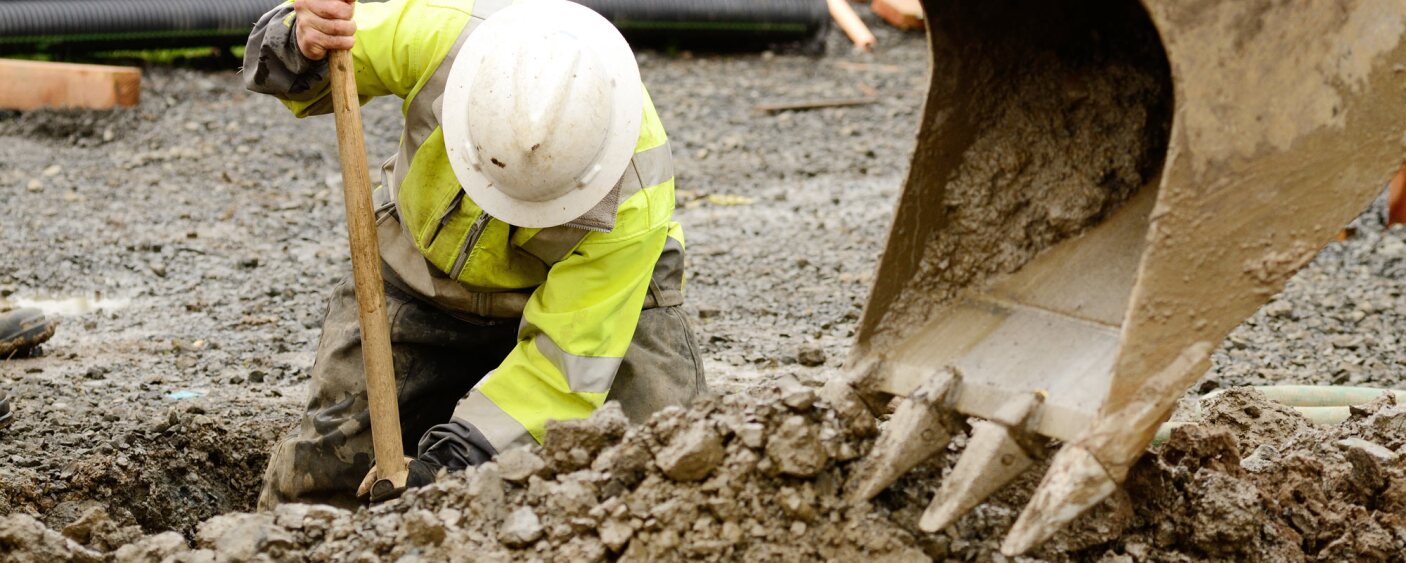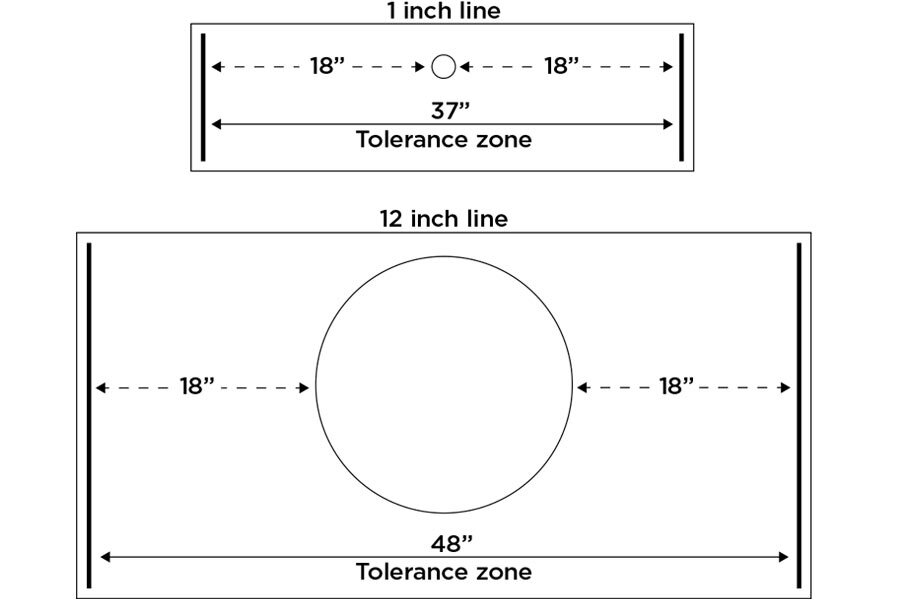Underground utility strikes can lead to very dangerous situations. It is important to be alert and aware of any buried utilities that may be present at your jobsite. Types of buried utilities include telephone, cable television, fiber optic communications, natural gas and propane lines, hazardous liquid, water lines, and sewers.
Avoid underground utility strikes
The first step to avoiding underground utility strikes is to mark utilities at your job site. Do not dig until underground utilities have been identified. Contact your state’s One Call Notification Center to have the utilities marked by calling 811, or visiting call811.com/811-in-your-state.
When working on private property, use a private company or staff an employee trained in other utility detection methods.
Mark the area to be excavated and provide a clear description of the proposed excavation site on the locate ticket. Utilities will be marked with different colored paints or flags to indicate the type of lines present. A universal color code has been adopted to identify types of utility lines and excavation plans.
Call for a re-mark if marks become unclear at your site due to weather conditions or job site operations.
Universal color code for markings
White
Proposed excavation
Pink
Temporary survey markings
Red
Electric power lines, cables, conduit, and lighting cables
Yellow
Gas, oil, steam, petroleum, or gaseous materials
Orange
Communication, alarm or signal lines, cables, or conduit
Blue
Potable water
Purple
Reclaimed water, irrigation, and slurry lines
Green
Sewers and drain lines
Digging tools and techniques
Use hand tools, flat-headed shovels, or other non-destructive digging techniques inside the tolerance zone. The tolerance zone is the area along each side of each existing utility line, typically within 2’ in each direction. Tolerance zones vary by state, so know your local requirements before starting.
Dig slowly and ease up when you get near the utility line to avoid accidental damage. Do not assume the depth of a utility line will remain the same, or that the line will run straight between markers. Stop digging and call 811 if utilities are not found where they were marked, or unmarked utilities are discovered.
When utilities are exposed, wrap and support them to protect from damage. Use caution when back-filling to prevent collapse, and avoid using rocks and other foreign materials in the backfill.
What to do if you strike an underground utility line
If an underground utility line is hit, immediately stop digging and report any damage to your supervisor, no matter how minor.
If a gas or electric line is hit, immediately stop work, evacuate the area, and call 911. Watch the area for signs of danger, such as fire and electrical sparks. Also be mindful of smells, like natural gas.
Once immediate dangers are assessed and controlled, call the utility company to inform them of the incident. This allows the utility owner/operators an opportunity to inspect and repair damages.
Tolerance zones
The information and recommendations contained in this material have been obtained from sources believed to be reliable. However, SECURA accepts no legal responsibility for the accuracy, sufficiency, or completeness of such information. Additional safety and health procedures may be required under particular circumstances. Please talk with your SECURA Risk Management Consultant for more information.







